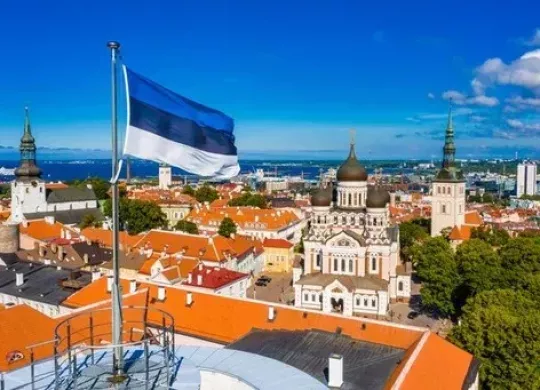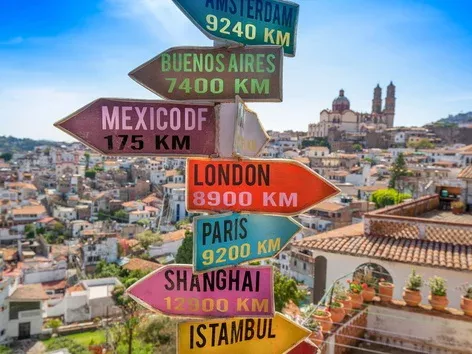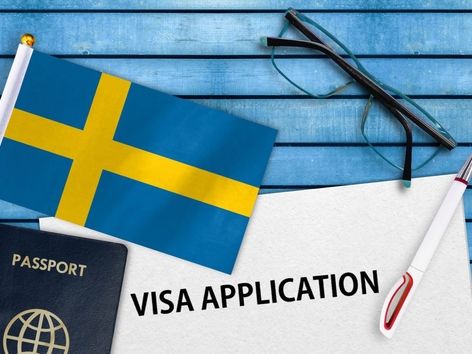Moving to Estonia for PR in 2024: pros and cons, visa application procedure and useful tips for expats
Table of contents
- How can an EU citizen move to Estonia?
- Moving to Estonia for non-EU citizens
- Moving to Estonia for work
- Digital nomad visa in Estonia
- Moving to Estonia to study
- Advantages of moving to Estonia
- Cons of moving to Estonia
- Prices and cost of living in Estonia
- Work in Estonia
- The level of wages in Estonia

Estonia is recognized as the most developed Baltic country in terms of economic performance and living standards. It is developing rapidly, and the average salary exceeds 1000 euros per month. Find out more about how to move to Estonia in 2024, the grounds for obtaining Estonian citizenship, as well as the pros and cons of moving
According to the main economic indicators and the standard of living of the local population, Estonia is considered the most developed country in the Baltic States. In addition, today this small state successfully competes with such European countries as Poland and the Czech Republic. In Estonia, the field of information technology is developing rapidly, and the average salary exceeds 1,000 euros per month.
Many expats and digital nomads have put Estonia at the top of their list of countries they plan to move to in 2024, according to surveys. We will talk about the pros and cons of moving to Estonia, as well as the document processing procedure, below.
How can an EU citizen move to Estonia?
EU/EEA and Swiss citizens do not need to apply for a visa to Estonia. They have the right to enter the country with a valid travel document or identity card. The permitted period of stay is up to three months.
Europeans who plan to stay in the country for a longer period of time must register their place of residence in the Estonian population register within the first month of their stay in the country, as well as apply for an Estonian identity card at the Department of Police and Border Guard.
Moving to Estonia for non-EU citizens
Citizens of the rest of the world must apply for a long-term visa to move to Estonia for permanent residence. It is usually valid for a year and can be issued for study, work, retirement or family reunification. After entering, this category of foreigners must submit an application for a temporary residence permit to the Department of Police and Border Guard.
Moving to Estonia for work
A work visa is issued for one year. After entering the country, you must apply for a temporary residence permit at the border police and border service.
A temporary residence permit is issued for five years and can be extended for ten years.
Digital nomad visa in Estonia
One of the most interesting visas for Estonia is the digital nomad visa. The state government introduced it on August 1, 2020. Based on the permit, a foreigner can live and work in the country for a year. A digital nomadic visa can be either type C (short-term) or type D (long-term). The difference lies in the length of stay and the cost of obtaining it.
In order to obtain a permit, you must:
- Provide proof that you have a job that does not depend on your location and can be done anywhere.
- Your customers and income are located outside of Estonia.
- The amount of income (before taxes) during the last 6 months before submitting the application was $3,504.
Registration procedure:
- Fill out the online application.
- Make a one-time payment of US$80 for a C visa or US$100 for a long-term D visa.
- Contact the nearest Estonian consulate with copies of the necessary documents.
- Wait for an approval response within 30 days.
A digital nomad visa allows you to live in Estonia for up to a year. After that, you can extend your stay here or choose another type of visa. This is a huge plus for obtaining a visa and moving to Estonia.
Moving to Estonia to study
Foreigners who plan to move to Estonia to study must first obtain a student visa. Based on this permit, you can study, work and live for one year. After entering the country, if your studies last more than a year, you must apply for a temporary residence permit, which is issued for five years.
Upon completion of studies, graduates will have another nine months to look for a job.
Family reunification in Estonia
A family visa is a residence permit issued by foreigners who plan to move to Estonia for family reunification. For this, it is necessary to be a family member of a person living in Estonia. The family visa is valid for one year. However, after entering the country, you can apply for a temporary residence permit, which allows you to stay for up to five years.
Grounds for obtaining Estonian citizenship
You can get Estonian citizenship:
- Through naturalization – after five years of legal residence in Estonia with a permanent residence permit.
- By origin – if one of your parents is an Estonian citizen.
- Citizenship by marriage – if you are married to an Estonian citizen or someone who has a permanent residence permit in the country.
Advantages of moving to Estonia
- Cost of living – Estonia is one of the cheapest European countries. The average cost of living per month is 1,200 euros, which is 26% cheaper here than in the USA. In addition, rents are on average 63% lower than in other EU countries.
- High air quality - according to the World Health Organization, Estonia has the best air quality in the world (after Finland).
- Security is a very spacious and safe country.
- Stable economy - according to the Doing Business agency, the Estonian state ranks 18th among 190 countries in the world in terms of accessibility and ease of doing business.
- Culture – Estonia has galleries and theaters and many cultural events, including fairs, concerts and festivals.
- Digital society - Estonian society has long been recognized as one of the most digitally developed societies in the world. Everything can be done online: from filing tax returns to voting and signing legal documents.
- Friendly local population - most Estonian citizens welcome migrants.
- Developed health care system - the average life expectancy in Estonia is higher than in most countries. The state has approved a national insurance plan that covers every citizen. This allows anyone to visit a doctor at any time for free.
Cons of moving to Estonia
- Difficult language - Estonian is difficult to learn. It is recognized as the 5th most difficult language for English speakers to learn. In addition, Estonian is spoken only in Estonia.
- Low level of infrastructure development - rural areas in Estonia are less developed.
- The weather in Estonia is extremely gloomy and cloudy with humid air, especially in winter.
- Lack of cosmopolitanism – 95% of Estonians were born there, so you won't see international diversity here. Also, some Estonians hold extremely nationalistic views.
Prices and cost of living in Estonia
Compared to most Western European countries, living in Estonia is very cheap. Even in Tallinn, the capital of the country, prices for housing and food are quite reasonable. Renting a one-room apartment in Estonia in the central part of the city will cost about 550 euros per month, and in remote areas about 415 euros. The price per square meter of real estate in the center is 3,505 euros, outside the city is 2,380 euros.
Work in Estonia
Local residents and citizens of the European Union have a priority right to employment in Estonia. However, citizens of third countries also find work here.
It is easiest for foreigners to find a job in Tallinn, where more than 60% of open vacancies in the country are concentrated. Unemployment in Estonia is kept at the level of 7-8%.
For successful employment, it is necessary to have a high level of qualification, sufficient experience, appropriate education and knowledge of the Estonian language. Knowing only English significantly reduces the chances.
The most popular jobs among expats: programmers, construction workers, drivers, doctors and technicians.
The level of wages in Estonia
According to the local statistics office, the minimum wage in Estonia in 2024 is 820 euros per month. The average salary is 1,775 euros per month, after taxes - 1,415 euros. Depending on the region, the salary in Estonia ranges from 1185 to 1994 euros per month.
Moving to Estonia, like any other country in the world, has certain peculiarities, but living here is sure to be a good experience for an expat or digital nomad.
The editors of Visit World recommend using the Travel Guide for Estonia for a comfortable and safe trip.
The guide is a detailed written document that contains basic advice on obtaining a visa, crossing the border, getting a job, citizenship, and much more. More details at the link.
Products from Visit World for a comfortable trip:
Checklist for obtaining a visa and necessary documents in Estonia;
Legal advice on immigration in Estonia;
Travel insurance for foreigners in Estonia;
Medical insurance all over the world.
Recommended articles
3 min
Popular
Rating of the best eco-friendly beaches in the world 2024
When choosing a beach vacation destination, more and more travelers are focusing on environmental friendliness. Find out more about the ranking of the cleanest beaches with the Blue Flag award in 2024
09 kwi. 2024
More details2 min
Travels
Tourism trends in Bali: shifting focus to higher quality tourism
Bali's recovery from the pandemic is well underway. As early as 2023, the island will welcome 4.8 million visitors. The tourism industry is being revitalized, with an emphasis on higher quality and environmentally friendly tourism. Here's a look at trends in Bali's tourism industry and the role of local entrepreneurs in the island's development
09 kwi. 2024
More details2 min
Expats
Can You Enter Mexico with US Visa in 2024?
Travelers are interested in the visa requirements for the countries they plan to visit. Thus, the question often arises whether it is possible to enter Mexico with a US visa. Find out more about the conditions for traveling to Mexico with a US visa, whether you can visit Mexico on an H1B visa, and general requirements for tourists
09 kwi. 2024
More details3 min
Residence permit
Residence permit in Sweden: peculiarities of the procedure in 2024
Sweden has always attracted migrants from all over the world. And this is not surprising, as more than 25% of the country's population is made up of foreigners. Find out more about the required documents, duration and specifics of the procedure for obtaining a residence permit in Sweden in 2024
10 kwi. 2024
More detailsAll materials and articles are owned by VisitWorld.Today and are protected by international intellectual property regulations. When using materials, approval from VisitWorld.Today is required.